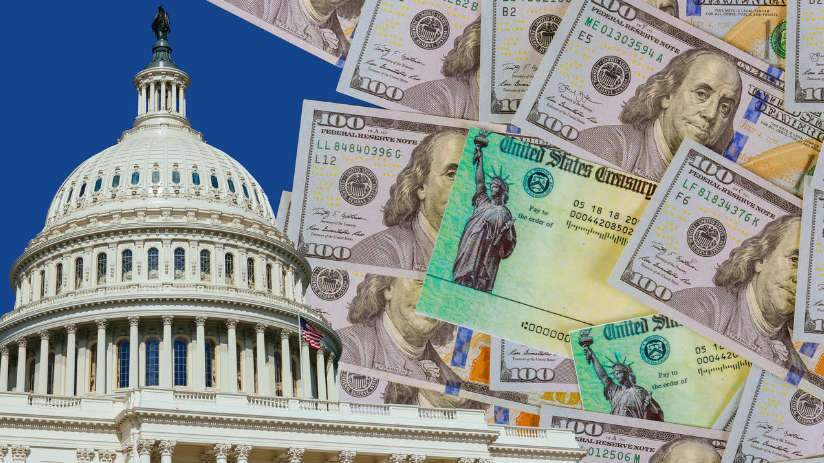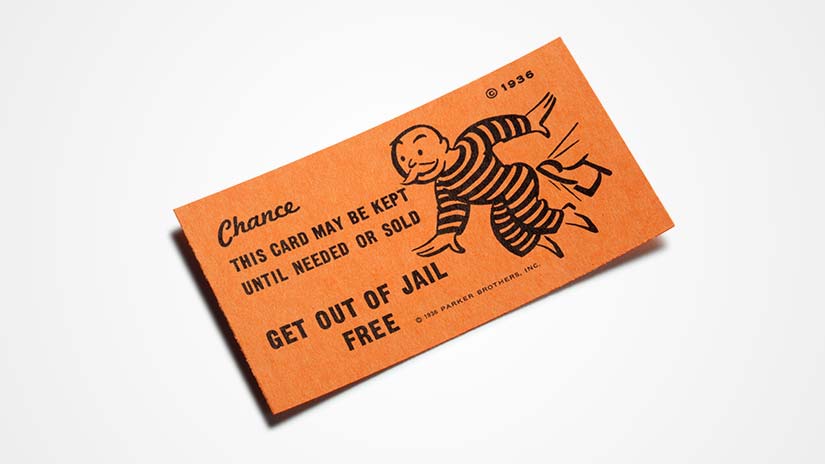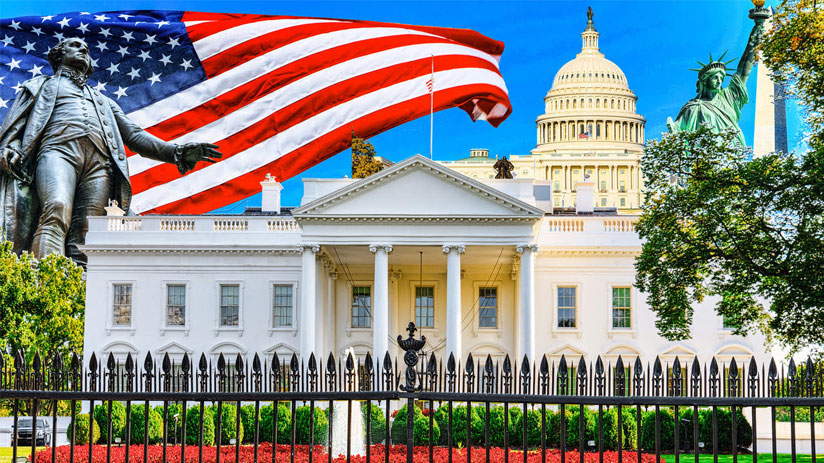
Reputation matters. Select a lead negotiator for the bargaining stage who is respected by both sides. They should be fair, firm, professional, experienced, trustworthy and ethical.

By Thomas Wood
The best negotiating style or strategy depends on the context, so master negotiators learn to read a situation and use appropriate methods to reach their goal. An assessment of the chosen negotiation strategies of four recent U.S. presidents demonstrates the power of understanding your situation and adjusting your style and strategy to ensure success.
The president of the United States is commander-in-chief, and as such he is also “negotiator-in-chief.” When forging a treaty with a foreign power or brokering a deal with the opposition party in Congress, he’s making strategic decisions about his approach to negotiating that we can learn from.
President Obama initially used a collaborative approach in pursuit of major initiatives like health care reform and debt reduction, but the tactic faltered because the opposition party wouldn't collaborate. After a series of budget crises in 2010-11—during which many supporters felt he gave up too much—he switched to a competitive approach on issues like employment and tax policy. While the president remains personally popular, poll ratings of his performance in office have probably suffered from his earlier, failed collaborative strategy. Obama’s reelection bid this fall will be the ultimate indicator of whether his negotiating styles have produced results acceptable to the American people.
George W. Bush (2001-2009) came into office with a competitive approach. In his first term—and especially after the terrorist attacks of 9/11—he developed both domestic and international policy without seeking much input from his counterparts. The America people endorsed Bush’s competitive approach in foreign affairs and national security policy by reelecting him in 2004. Significant crises of his second term like Hurricane Katrina and the financial panic of 2008—as well as the intractability of long-term problems like illegal immigration—highlighted the need for collaboration, such that by the end of his presidency Bush was working more with his counterparts in developing policy.
Ronald Reagan (1981-1989) understood that even within the same, prolonged negotiation different strategies are often called for at different times. When he came to office the United States was in the 4th decade of its global competition with Soviet Union known as the Cold War. In his first term, he took a competitive approach by initiating a massive military build-up. Meanwhile, on the domestic front, he took a more collaborative tack, forging ties with conservative Democrats to push through Congress big tax and spending cuts. He worked collaboratively with his counterparts to pass substantial tax code reform in his second term. Also in his second term, Reagan started to engage the USSR in a collaborative policy, capitalizing on the ascendancy of reformist leader Mikhail Gorbachev. Reagan’s perception of the need to take a hard line with the USSR in his first term, then switch to a collaborative approach in his second demonstrates his skill as a negotiator. Voters showed their support for Reagan’s negotiation style by giving him a landslide reelection victory; the American public continues to hold him in high regard, as exemplified in a 2011 Gallup Poll in which he was judged the greatest US president.
Jimmy Carter (1977-1981) is often seen as having employed an avoidance approach, exemplified by what was viewed as an overly passive response to the Iranian hostage crisis, and by the U.S. boycott of the 1980 Summer Olympics in Moscow after the Soviet invasion of Afghanistan. This perceived strategy cost him public support, denying him a second term. Out of office, he seemed to learn that collaboration was critical, and in his post-presidential years preached the importance of talking with our enemies as he successfully advocated for human rights during conflicts in Haiti, Bosnia, Ethiopia, and Sudan. Carter became so adept at collaboration that he won the Nobel Peace Prize in 2002.
Though issues in your negotiation may not rise to presidential levels of complexity and import, fitting the strategy to the situation is still crucial for success.

By Marianne Eby
For the last 20 years, the popular television American crime drama Law and Order has taught hundreds of millions of viewers in 19 countries about US criminal law. What those viewers may not realize, however, is that they have also become quite familiar with the nuances of negotiation strategies that apply to commercial and internal negotiations as well. Watch this show and you'll improve your own bargaining skills, maybe even earn your get out of jail free card.
Since trials are expensive and unpredictable, both sides in any legal dispute—including criminal cases—try to reach a settlement before resorting to court. A plea bargain, as its name indicates, is an agreement on the plea the defendant will enter; in exchange for the simplicity and efficiency of a guilty plea, the prosecutor will make some kind of concession in the punishment.
We may forget that plea bargaining is just bargaining. What’s different about it, and what makes it so drama-worthy, is that the consequences are life binding. Instead of the parties negotiating over money, scope and terms (the traditional objects of commercial bargaining), they are often trading the parameters for criminal punishment — jail time, psychiatric treatment, or another kind of restriction. Money can play a role as well, in terms of fines, relinquished assets or victim compensation, but nothing gets more heated than when the primary concern is our freedom. With such heightened stakes, the plea bargaining on Law & Order surreptitiously involves and instructs viewers in a number of issues that arise in all bargaining.
First, the likely negotiation strategy for plea bargaining in a criminal case would seem to be competitive rather than collaborative -- defendants certainly value the outcome more than their relationship with the prosecutor. And, at first glance, it may appear that the opposing sides in a plea bargain are of unequal strength, which should lead to a one-sided negotiation.
But regular viewers of Law & Order come to understand that the complex variety of cases and their handling by attorneys who work with each other regularly can complicate the bargaining process and lead to a variety of negotiation strategies -- from competition to compromise -- depending on the case. Though the prosecution has all the resources of the police and other government agencies on its side, the defense has some advantages. For instance, it need not prove the client’s innocence, only raise reasonable doubt about the state’s claims of guilt. Defendants are also often able to gain concessions on jail time and other penalties by assisting the state in other prosecutions.
Plea bargaining on Law & Order also gives us a clear view of the difference between a negotiator’s position and interest. The defendant's position is his or her plea -- guilty or not guilty. But it is in his or her interest to consider a different plea, based on the likelihood of conviction, if it will reduce his or her sentence. The defendant's interest can include things like less jail time, confinement at a particular facility, lower bond, dropped charges, etc. Also lawyers can have different interests than those of their clients -- defense attorneys are paid more if they go to trial, and always need to maintain a good relationship with the prosecutor because their next deal may depend on it.
The prosecution’s stated position is that it must punish the defendant for his/her crime. Its interest, however, is in curbing crime generally, sometimes by using information from lesser criminals to successfully prosecute more serious offenders, information they are willing to trade for a reduced sentence. On “Law & Order,” consideration of this sort of trade is often presented as a moral dilemma, pitting the greater good against justice in a particular case.
Law & Order also gives viewers a sense of the nuances, timing, and performance of a skilled negotiation. The attorneys on the show (and the viewers) enter a plea-bargaining process knowing the facts of the crime, the evidence, and the law. But we know after several episodes how equally important is the understanding of the other side's histories and tendencies for well-timed offers and proposals, and skillful responses.
If no bargain can be struck, both parties have the same Best Alternative to a Negotiated Agreement (BATNA)-- a trial, with high costs and risks for both sides. But regular viewers of the show know they need only wait for the next episode to see another negotiation unfold.

By Marianne Eby
In a recent seminar, a client described a negotiation crisis he'd had: at a meeting he believed was going to be an information exchange with his wholesaler, he was ambushed: without warning, the other side brought a team of eight from his company, made a lowball offer, and then announced that they no longer needed our client's business. What to do?
Our client was less stunned than he might have been -- the same person had pulled the same stunt two years before. Why was our client still doing business with him? A surprise attack is for competitive, not collaborative negotiations, since it tends to sacrifice the relationship to the outcome. And indeed, our client had avoided contact with the bully after the last deal, believing he would be gone by the time the contract needed renegotiation. Ending the relationship was difficult, because the bully's company had become our client's sole source of distribution.
When you have to negotiate with a bully, here are five tips for preventing and defending against a surprise attack:
Our client's plan after our discussion was to circle back to other retailers and wholesalers and explore his options and strengthen his BATNA before returning to the bully. Stay tuned for an update!

By Thomas Wood
We tried to restrain ourselves from commenting in our negotiation workshops these last two months on the drama going on near our Washington, DC offices as the US President and Congress negotiated the US debt ceiling, with the President’s signature healthcare legislation – Obamacare – as the bargaining chip. Careful to stay neutral, but always alert to the strategy angles, we now have a few things to say, and they are all seeped in the fundamentals of negotiating. This Energizer Bunny just keeps on giving!
Negotiations to reopen the shuttered federal government and raise the nation’s debt ceiling were notable for one side’s insistence that it wasn’t negotiating at all. But despite the claims of President Obama and other Democratic leaders that they wouldn’t bargain over what they described as the basic functions of government, in the end they worked out a deal with their Republican adversaries. Most of us just don’t mean it when we say we won’t negotiate.
What other negotiating lessons can we learn from Washington’s latest fiscal crisis? At least five fundamentals.
1. The first is that preparation takes time. Although the partial shutdown of the federal government caught many Americans by surprise, defunding the government as a strategy for derailing health care reform was a plan in the making by an important faction of the Republican Party. President Obama, for his part, apparently decided in 2011—in the midst of another debt-ceiling confrontation—that he would never again negotiate over whether Washington should have enough borrowing authority to pay its bills. As it generally does, this early planning affected the outcome of the negotiations.
2. Another prominent feature is the power of deadlines. Deadlines often figure in negotiation—sometimes proposed to spur action in a cooperative way, sometimes wielded as a weapon by one side to intimidate the other.
Government funding was due to expire October 1 and the Treasury’s borrowing limit (the “debt ceiling”) would be reached on October 17. There was a difference between the two, however: the first was acknowledged by both parties to be justified and absolute, since it was the statutory end of the government’s fiscal year. The second was a less concrete estimate by the Treasury. Some Republicans probed this second deadline, suspecting it was arbitrary and changeable. Though the GOP was criticized for questioning the precision of the debt ceiling deadline because the consequences of default were so severe—regardless of exactly when it was triggered—in less drastic situations such probing of deadlines is entirely appropriate.
3. Third, our approaches can evolve as the negotiations evolve. Like most political confrontations, the strategy when this negotiation began was competitive. Each side felt it had right on its side and demanded the other yield. The Republicans, however, almost immediately shifted to what they presented as a compromise strategy, inviting the President and other Democrats to talk out their differences. But Democrats felt secure enough in their position—and viewed the GOP proposals as so unreasonable—that they didn’t feel pressured to go along. This is not usually a practical strategy for ongoing relationships such as the President and Congress must maintain, but such is the degree of political polarization in Washington today. Eventually, to break the weeks-long deadlock, Democrats joined in the compromise strategy, which seeks to give something to each side.
4. Fourth, positions are merely one way to satisfy interests. That’s why positions move in negotiations. The general wisdom is that the Republicans got much less than the President out of this compromise settlement, but some commentators think that viewpoint is confusing positions with interests. In fact, Republican positions changed over the course of the negotiation: beginning with a demand to defund or delay the implementation of the Affordable Care Act (Obamacare), then moving to other tax and spending issues, and eventually to policies disconnected from the budget.
But Republican interests remained the same throughout: a smaller, less intrusive federal government funded by lower taxes. Viewed that way, even though health care reform was only slightly modified, a central GOP interest was served by maintaining existing spending restraints in the temporary budget adopted as part of the deal.
5. And last, without a strong Plan B or BATNA, there is little likelihood of a big win. One reason President Obama could at least in the beginning maintain that he was not negotiating, and in the end get more of what he wanted, is that the other side began the process without apparently developing a strategic Negotiation Envelope. This is a planning tool that maps out wants (Most Desired Outcome), reasonable expectations (Goals), fallbacks (Least Acceptable Agreements) and “Plan B” (Best Alternative To a Negotiated Agreement—BATNA). The most aggressive GOP leaders of the confrontation seemed to have identified a lot of Most Desired Outcomes, but not one Least Acceptable Agreement. And there was no viable BATNA, since the public would not put up indefinitely with a closed government or with the economic chaos caused by a national default.
Perhaps that’s the principle negotiating lesson of the federal fiscal crisis of 2013: set a reasonable goal and chart a path to get there. Whatever the merits of the Republicans’ politics and policies, their negotiating strategy may need a recalculation.

By Leslie Mulligan
Businesses had to sharpen their negotiation skills as markets and supply chains endured enormous pressure in 2020. Now it’s the U.S. president’s turn to demonstrate his negotiation expertise in passing the $1.9 Trillion Covid-19 Relief Bill. Is he willing to collaborate with Congress, or will he take on a competitive approach? And how will the Republicans respond?
President Biden has made it his mission to tackle the devastating pandemic – it is the very first priority listed on the White House website. Specifically, he has vowed to get the massive $1.9 trillion coronavirus relief package passed in U.S. Congress and ensure Covid vaccines are distributed as rapidly as possible. Time is of the essence as the economy remains weak; many still face desperate times. Yet President Biden has also pledged a bipartisan approach to governance and wants to unite the country – so how do you negotiate effectively with Congress in this still polarized landscape to deliver on these promises; or do you?
Bipartisanship Approach?
Will a collaborative (win-win, interest-based) or even compromise approach produce bipartisan approval, or will the Administration have to take a competitive approach (win-lose) to get results.
Emerging from the last presidential election, the USA is seriously divided, no doubt about it. Yet President Biden is on a quest for unity, including in his Congressional relationships. As a long-serving alumnus of the Senate, he underscored the need for bipartisanship: “I think I can work with Republican leadership in the House and Senate. I think we can get some things done.” But will Republicans reciprocate – will they work with the president and their Democratic colleagues? We don’t know what is happening behind the scenes, but the president has only publicly met with 10 Republican senators in early February to discuss the Covid relief bill. And Republicans have felt rebuffed by their

Congressional colleagues: “…they were frustrated that their views weren’t being considered as Democrats pushed the legislation forward without GOP support”. This may foreshadow a competitive stance.
And yet, President Biden has the support of the American public writ large – even Republicans: “Half of all Republicans believe that President Joe Biden's $1.9 trillion COVID-19 relief package should be passed because of the proposed round of $1,400 stimulus checks, according to a new poll.” 73% of all Americans support this bill, according to a Navigator Research poll last week. Bipartisanship can be achieved in the public domain – that has certainly been realized in the run-up to the passage of this bill. But will any congressional Republicans come on-board? Jen Psaki, the White House Press Secretary, put this question succinctly when asked about Republican support: “Obviously, Republicans in Congress will have to make their own choice about whether they support the final package. But the vast majority of the public supports it, including the vast majority of most members’ constituents. So it’s really a question for them.”
But will Democrats entice them to support a negotiated bill, with a willingness to compromise by giving in on some of what’s been proposed, if not collaborate by finding new solutions that satisfy both parties? Or simply use a heavy-handed competitive approach to get what they want. The overriding negotiation strategy used here may set the tone for the next 4 years.
Time
Time is almost always a factor in negotiations. There is an adage in negotiating – “deadlines force concessions”. And President Biden feels the pressure of a looming deadline. On March 14th, over five  million people will lose their weekly $300 federal unemployment benefit. The PPP program runs out for small businesses on March 30th, and the airline industry may take a big hit as $15B in federal funds that subsidize payrolls also expires. But will Congress feel the same pressure of this deadline? Assuredly the Democrats largely will. But Republicans may resist the pressure, advocating that previous stimulus bills have set the stage for recovery - the trajectory is positive. Could Republicans use time as leverage to get more of what they want? All politicians have a political calculus even while making policy decisions – how will these deadlines impact their negotiations across the aisle and with President Biden?
million people will lose their weekly $300 federal unemployment benefit. The PPP program runs out for small businesses on March 30th, and the airline industry may take a big hit as $15B in federal funds that subsidize payrolls also expires. But will Congress feel the same pressure of this deadline? Assuredly the Democrats largely will. But Republicans may resist the pressure, advocating that previous stimulus bills have set the stage for recovery - the trajectory is positive. Could Republicans use time as leverage to get more of what they want? All politicians have a political calculus even while making policy decisions – how will these deadlines impact their negotiations across the aisle and with President Biden?
Policy vs Politics
Great negotiators know that their positions are driven not just by what they can conceivably achieve, but by a greater business or overriding imperative. The same is true in negotiations over legislation. Politics are the quintessential overriding imperative that drives what each legislator is willing to do.
“Negotiation in Congress is never solely about policy; politics and policy are always intertwined”, per the Task Force Report published in December 2013 by the American Political Science Association (APSA), Negotiating Agreement in Politics, which sheds light on the challenges of American political negotiations. There are valuable lessons in that report, with pragmatic advice for all parties at the Congressional negotiation table. One truism comes from former Rep. Barney Frank (D-MA): “Nobody pushes for unpopular policies.” And it appears that the Covid relief bill is popular! But elected officials manage their politics to keep their constituents (and donors) happy - they must justify their policy votes. Those up for reelection in 2022 will weigh their policy decisions now against a potentially different political landscape one year hence. In fact, news reports indicate that Republicans believe they are better served to deny President Biden a “bipartisan win” – and so are working to keep their own party cohesive, and plan their own PR push to paint this Bill as “bloated”, disparate and not well-aimed.
Stakeholders
When defining any negotiating strategy, it is paramount to assess who your stakeholders and what their Interests are, and how they impact your plan. When it comes to legislation, there is no shortage of competing stakeholder Interests to address.
President Biden is banking on the American public as the most important stakeholder in this landscape. Most of them enthusiastically support this bill, and the timing is such that now is the opportunity to strike. Big business also supports quick passage of this Bill. Just this week, 150 of the country’s most powerful executives penned a letter to President Biden urging action: “Congress should act swiftly and on a bipartisan basis to authorize a stimulus and relief package along the lines of the Biden-Harris administration’s proposed American Rescue Plan."
Republicans may take the longer view, and assume that their stakeholders, their constituents, will accept resistance to this bill. After all, it may get passed even without Republican support. Then the subsequent policies will help everyone, without Republicans having to go “on record” as supporting a democratic presidential priority. “In short, explicitly partisan political considerations condition the opportunities for deal-making on policy issues,” suggests the learned authors of the ASPA report mentioned earlier.
BATNA’s
No seasoned negotiator enters negotiations without a back-up plan, known as a Best Alternative to a Negotiated Agreement or BATNA. That means both sides of the political aisle have BATNAs in play that they are willing and able to execute.
play that they are willing and able to execute.
Can the Covid relief bill pass without Republican support? Does President Biden have an alternative to a truly bipartisan bill, a BATNA in the lexicon of negotiating? Absolutely – after all, the Budget Reconciliation tool is available to him, now that Congress passed the Senate’s budget earlier in February. As long as the Democratic party stays cohesive, this enables passage of the Covid relief bill with only Democratic support. If Democrats prove each item in their reconciliation bill has a direct budgetary impact, this tool can be used to prevent Republicans in the Senate from filibustering and blocking the floor vote. So inasmuch as President Biden would like Republican support, it is not necessary for passage of this bill. His BATNA is strong, and he is willing to execute it, to ensure the needs of the American public are being met. Republicans too have their BATNA – they can decline to support this Bill, counting on their supporters to look positively on that decision down the road. This is a risk, but will they be willing to take it?
Trades
Negotiators come to the table prepared to trade. And President Biden has indicated some willingness to trade on the minimum wage – its inclusion in the Bill at all, a phased-in timeline to protect small businesses, and maybe even the new wage rate.
There are two factors that complicate this element of the bill. First, Senator Joe Manchin (D-WVA) has said he does NOT advocate for the full $15/hour – although he would support a reduced rate of $11/hour. Second, couple that with the fact that the Senate parliamentarian has ruled that as written, the minimum wage hike does not meet the threshold of having a “direct budgetary impact” – thus eliminating it as is from inclusion in the Budget Reconciliation Bill. This bargaining chip may come off the table entirely when the Bill reaches the Senate, or it may become a viable bargaining chip. The president has said he is open to negotiating the minimum wage. But cohesion among the Democratic senators will still be crucial on other elements of the bill, and keeping Senator Manchin in the fold may be a challenge that President Biden faces beyond just this particular legislation.
Final Thoughts
This bill will get passed, but probably with Democrats taking on a competitive approach ultimately and driving passage without any compromise. President Biden is willing to execute his BATNA and believes that his primary Stakeholder – the American public – needs the relief that it will provide, and will reward his Administration for it. Bipartisanship will have to wait, as the president feels the pressure of the March deadline. The Republican political calculus indicates that they too can take a competitive approach and won’t be penalized by their supporters. But this first interaction between the president and Congress may not bode well for collaboration between the two parties in the future. Time will tell, so stay tuned.
Please provide us with some details and we will be in touch soon!